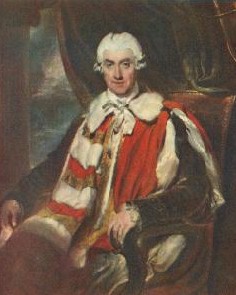Elizabeth Thynne, Marchioness of Bath
|
The Most Honourable The Marquess of Bath KG |
|
|---|---|
 |
|
| Secretary of State for the Northern Department | |
|
In office 7 March 1779 – 27 October 1779 |
|
| Monarch | George III |
| Prime Minister | Lord North |
| Preceded by | The Earl of Suffolk |
| Succeeded by | The Viscount Stormont |
|
In office 20 January 1768 – 21 October 1768 |
|
| Monarch | George III |
| Prime Minister |
The Earl of Chatham The Duke of Grafton |
| Preceded by | Henry Seymour Conway |
| Succeeded by | The Earl of Rochford |
| Secretary of State for the Southern Department | |
|
In office 9 November 1775 – 24 November 1779 |
|
| Monarch | George III |
| Prime Minister | Lord North |
| Preceded by | The Earl of Rochford |
| Succeeded by | The Earl of Hillsborough |
|
In office 21 October 1768 – 12 December 1770 |
|
| Monarch | George III |
| Prime Minister |
The Duke of Grafton Lord North |
| Preceded by | The Earl of Shelburne |
| Succeeded by | The Earl of Rochford |
| Lord Lieutenant of Ireland | |
|
In office 5 June 1765 – 7 August 1765 |
|
| Monarch | George III |
| Preceded by | The Earl of Northumberland |
| Succeeded by | The Earl of Hertford |
| Personal details | |
| Born |
Thomas Thynne 13 September 1734 |
| Died | 19 November 1796 (aged 62) St George Hanover Square Westminster, Middlesex Great Britain |
| Political party | Tory |
| Spouse(s) | Lady Elizabeth Bentinck (m. 1759) |
| Children | Six |
| Residence | Longleat |
| Alma mater | St John's College, Cambridge |
| Occupation | Politician |
Thomas Thynne, 1st Marquess of Bath KG (1734–1796) was a British politician who held office under George III serving as Southern Secretary, Northern Secretary and Lord Lieutenant of Ireland. Between 1751 and 1789 he was known as The Viscount Weymouth. He is often best known for his role in the Falklands Crisis of 1770.
He was the elder son of Thomas Thynne, 2nd Viscount Weymouth (1710—1751), and the great-grandnephew of Thomas Thynne (c. 1640–1714), who was created Baron Thynne and Viscount Weymouth in 1682.
His mother was Louisa (d. 1736), daughter of John Carteret, 1st Earl Granville, and a descendant of the family of Granville who held the earldom of Bath from 1661 to 1711. The Thynnes are descended from Sir John Thynne, the builder of Longleat, the splendid seat of the family in Wiltshire. Sir John owed his wealth and position to the favour of his master, the protector Somerset; he was comptroller of the household of the Lady Elizabeth, and was a person of some importance after that princess became queen. Another famous member of this family was Thomas Thynne (1648–1682), called on account of his wealth "Tom of Ten Thousand." He is celebrated by Dryden as Issachar in Absalom and Achitophel, and was murdered in London by some Swedes in February 1682.
...
Wikipedia
